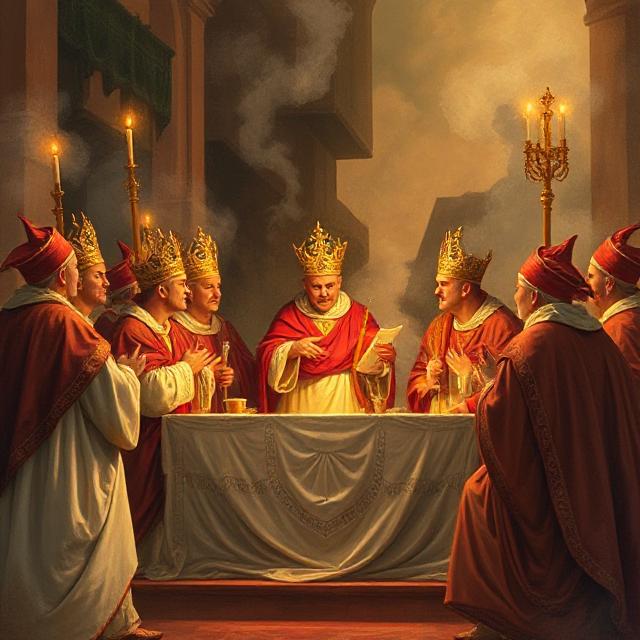"So, who came up with this whole 'conclave' thing? It sounds like a pretty intense way to choose a new Pope!"
You're right, the conclave is a pretty unique and intense process! It wasn't invented by one single person, but rather evolved over several centuries within the Catholic Church. To understand how it came about, we need to look back at how Popes were chosen in the early days.
In the early Church, the election of a new Pope was often a messy affair. There wasn't a clear, standardized procedure, and various groups – the clergy, the Roman nobility, and even the general public – all had a say. This often led to long delays, political maneuvering, and even violence. Imagine different factions vying for power, trying to get their candidate elected!
As the Church grew in influence, so did the importance of the papal election. But the lack of a clear process meant that these elections could drag on for months, or even years. For example, in the 13th century, one papal election took nearly three years! This kind of delay caused serious problems for the Church, leaving it without clear leadership and vulnerable to outside interference.
It was this problem of lengthy delays and external influence that led to the development of the conclave. A major turning point came with the election of Pope Gregory X in 1271. His own election had taken almost three years, and he'd seen firsthand the chaos and problems that could arise during a prolonged sede vacante, the period when the papal seat is empty.
So, when Gregory X became Pope, he decided to do something about it. In 1274, he issued a document called Ubi Periculum ("Where Danger Lies"). This document laid down a set of strict rules for future papal elections.
-
The cardinals would be secluded in a closed space (hence the term "conclave," from the Latin cum clave, "with a key").
-
Their food and living conditions would be restricted to encourage a speedy decision.
-
The voting process was formalized, with clear rules for balloting and the required majority.
Gregory X's aim was to prevent the kind of drawn-out, politically charged elections that had plagued the Church in the past. He wanted to create a system that would be more efficient, more focused, and less susceptible to outside influence.
Over the centuries, the conclave has been modified and refined, with changes to the location (it's now usually held in the Sistine Chapel), the qualifications of the electors, and some of the voting procedures. But the core principles established by Gregory X – seclusion, deliberation, and a structured process – have remained in place.
In essence, the conclave was "invented" gradually, through a series of developments aimed at ensuring the orderly and timely election of the Pope. Pope Gregory X's reforms were crucial in formalizing the process and establishing the system that, with some modifications, is still used today.
